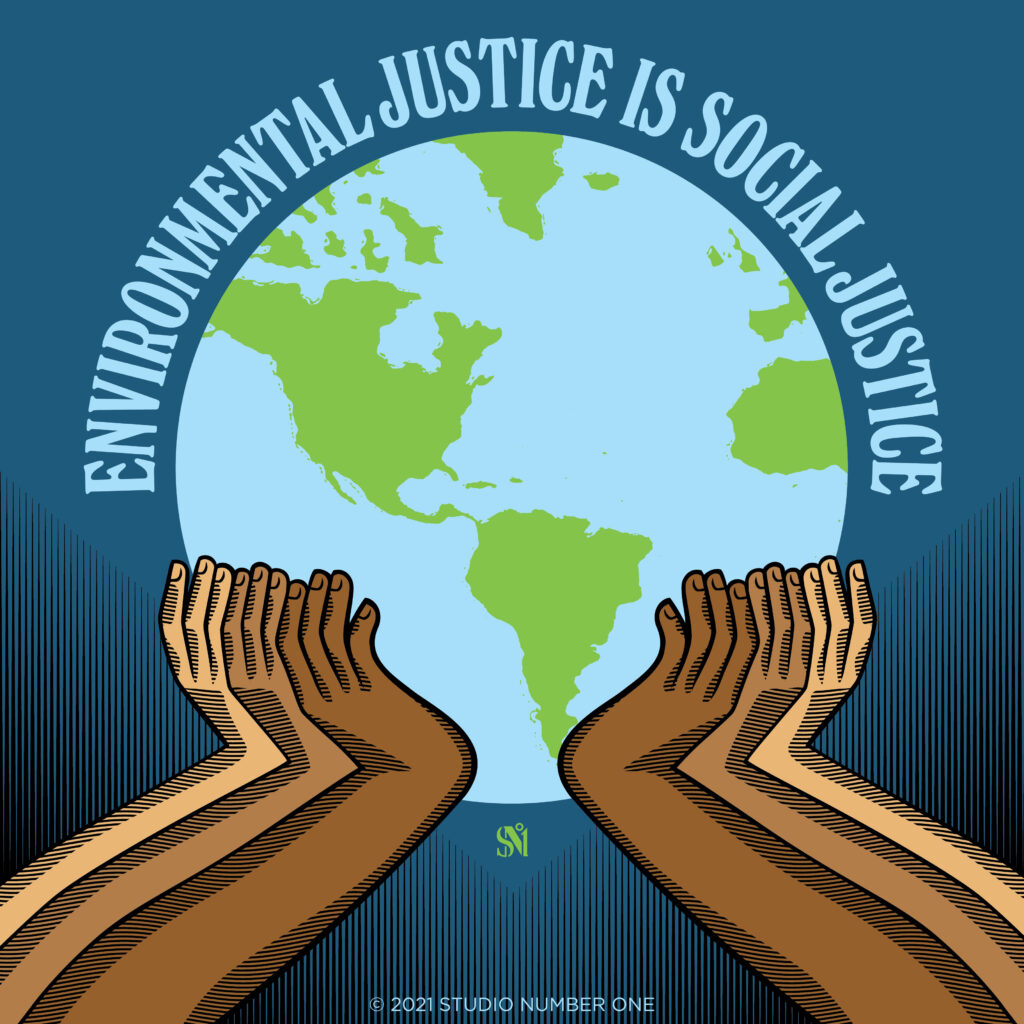The term environmental justice gets thrown around a lot. President Biden talks about it, the Department of Environmental Protection (DEP) has environmental justice policies, CCJ works on environmental justice issues, but what is it and how does it actually help people and communities?
What is Environmental Justice?
The environmental justice movement has its roots in the civil rights movement of the 1960s. Leaders, primarily people of color, recognized that communities of color, rural, poor communities, and indigenous communities were subject to some of the worst environmental conditions. These communities are often chosen to host dangerous industries, whether it be landfills, steel mills, or petrochemical facilities, and have experienced harm to their health, communities, and places of recreation.
In 1991, leaders across the environmental justice movement came together for the First National People of Color Environmental Leadership Summit. There, the Principles of Environmental Justice were drafted and adopted. The principles are diverse but include the right of all workers to a safe and healthy working environment; the cessation of the production of toxins, hazardous wastes, and radioactive materials; informed consent; and other ideas. In general, these principles boil down to the idea that no one should be disproportionately exposed to adverse environmental impacts. These principles still guide the work of environmental justice organizations today, including the Center for Coalfield Justice.
What is the Benefit of an Environmental Justice Designation?
For communities that receive an environmental justice designation (“EJ communities”) in Pennsylvania, certain permit applications will trigger the DEP’s Public Participation Policy. The policy encourages the applicant to conduct targeted outreach to the community, publish easy-to-understand information about the project, and to hold public meetings within the community. The DEP will also hold informational meetings with the public and release easy-to-understand information to the communities concerning the project. Essentially, an environmental justice designation in Pennsylvania simply encourages increased public participation and targeted outreach.
At the federal level, the Justice40 Initiative requires 40% of the benefits of certain federal investments to flow to disadvantaged communities. In this case, the term disadvantaged communities is interchangeable with EJ communities because the qualifying investments fall in the categories of climate change, clean energy and energy efficiency, clean transit, affordable and sustainable housing, training and workforce development, remediation and reduction of legacy pollution, and the development of critical clean water and wastewater infrastructure. So, a federal designation means more federal investments and benefits should come to that community. Additionally, stakeholders in these communities must be meaningfully engaged to determine the benefits they receive, and agencies must submit reports on the benefits directed to EJ communities.
Which Communities Get an Environmental Justice Designation?
In Pennsylvania, currently, the designation is placed on any census tract where at least 20 percent of residents live at or below the federal poverty line, and/or at least 30 percent identify as a non-white minority, based on data from the U.S. Census Bureau and the federal guidelines for poverty. However, we expect the DEP to update the definition of EJ communities in the near future.
At the federal level, the White House created the Climate and Economic Justice Screening Tool, which helps federal agencies decide where to direct benefits under the Justice40 Initiative. To receive a designation, a census tract must meet the threshold for at least one category of burden indicators, which include an associated socioeconomic burden. See more information on how a census tract meets a burden indicator and receives designation here.
The metrics used on both the state and federal levels to determine EJ communities are not perfect. At the state level, the metrics should include more burden indicators – not focus solely on income and demographic data. However, in the forthcoming definition update, DEP is expected to do just that. They are planning to assess burdens and characteristics of census tracts in four categories to assign a score. While it isn’t clear what score will warrant an EJ designation, the higher the score a community receives, the higher their burden. Factors considered in the new designation include ozone, PM2.5, compressor stations, unconventional and conventional oil and gas Wells, coal Mining and abandoned Mines, asthma, cancer, unemployment, race, poverty, and more. These changes should ensure many of CCJ’s communities receive the benefits of an EJ designation.
There are a few problems with the federal tool. First, if a community has a median income more than 200% ($55,500 for a family of four) of the federal poverty level, they are not eligible to receive an EJ designation. Thus, CCJ has advocated for setting a cap at 250% ($69,375 for a family of four) for designation with a tiered system to receive benefits. While many communities in Washington and Greene Counties would not receive a designation if the cap sits at 200% of the federal poverty level, setting a cap at 250% with a tiered system to receive benefits would provide aid to more people who need it. The presence of cumulative impacts, not just income level, could also inform the tiers. No matter what, under a tiered approach, those with the most need should see the most significant benefit.
Additionally, there are many factors that the federal tool does not consider. It does not reckon with cancer rates under the Health burden, abandoned and orphaned oil and gas wells under the Legacy Pollution burden, or the percentage of people reliant on fossil-fuel-related jobs under the Workforce Development burden. Additionally, while emissions levels for PM2.5 and diesel may lead to a designation, the current presence of polluting industries (number of permits) and their cumulative impacts are not considered. In its current state, unfortunately, the tool is not taking into account some of the major concerns for our communities.
So is it Good or Bad to be an Environmental Justice Community?
Clearly, receiving an environmental justice designation is a bit of a mixed bag for communities. On one hand, it means that government resources are being directly targeted at residents. Funding for projects that provide good-paying jobs, upgrades to housing and transit, and cleaner, more sustainable communities is always a positive, especially for communities that have previously been passed over for needed investments. Additional opportunities to learn about and comment on policies related to the health and well-being of the community also put EJ communities on more of a level playing field with powerful industry players and more affluent areas.
On the other hand, an environmental justice designation is an indication that factors like income, employment, health, housing, or pollution are below federal or state standards. To put it simply, it’s a sign that a community is struggling, and often in many overlapping ways. And when a faceless government body in Harrisburg or Washington calls a community poor, or unhealthy, or underdeveloped, it creates a stigma that can feel like residents are somehow at fault (when the reality is that that decision-makers and elected officials haven’t done enough to fix problems.) It can feel especially cruel to people living in areas where corporations spent decades extracting resources before abandoning them, leaving behind the environmental damage and economic turmoil that causes them to be defined as “disadvantaged” today.
Based on conversations with residents living in EJ communities in rural Pennsylvania, many feel that they aren’t any worse off or more at risk than others, and some even resent the idea that their towns need federal aid at all. The designation can also pit towns against each other by giving preferential treatment to one census tract and not another, despite having obvious similarities in demographics, industry activity, and other visible factors.
In a perfect system, we wouldn’t need to label communities as disadvantaged in order for them to receive the help they need; we would simply afford low-income and minority communities the same level of priority that rich, predominantly white ones have always enjoyed. We would also have the power to keep harmful industries and inept local governments from poisoning and bankrupting our communities. But under the current political landscape, an environmental justice designation can be a first step towards a thriving community for residents that have been ignored for too long. There is much work to be done to improve the designation process, direct funds where they need to go, and eliminate the stigma and jockeying for position that exists in the current landscape.



